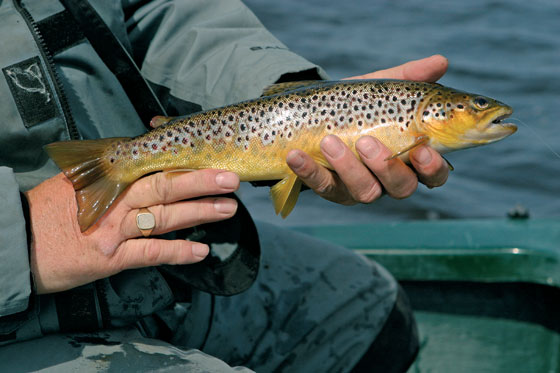Throughout the country there are loads of out-of-the-way places where you can wet a line for rainbows and ‘proper’ wild brown trout. When tackling one of these venues it’s always best to travel light because you’ll be covering loads of water. The best way to fish them is to cast and step; this way a lot of water, and fish, can be covered in a day.
If you are lucky enough to get a boat, then drifting is the number-one method, but make sure to work that top dropper fly so it creates a disturbance in the surface layers.
When fishing for upland trout it’s often best if you can fish two or preferably three flies on a cast (see diagram). The best set-up is a bushy pattern on the top dropper to try and move some water and to hopefully attract the fish’s attention. A suggestive pattern is always best on the middle dropper and on the point something with a little weight to achieve a little depth. The set-up features a floating line with 6ft of 10lb line to the top dropper, six ft of 7lb line to the middle dropper and 5ft of 5lb line to the point.

Tackle for the job would be a 10ft, 5-wt or 6-wt rod combined with a floating or intermediate line, and leader strength should be no more than 6lb. The best retrieve, without a shadow of a doubt, is to go for fairly brisk 1ft pulls, making sure to lift the rod tip at the end of the retrieve to move some water with that top dropper.
Patterns
Top Dropper
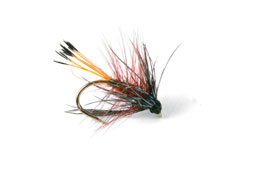 Claret Bumble Wild fish have a special liking for all things claret and this fly does the job on most occasions. This pattern is best fished as top dropper because the palmered body hackle tends to move plenty of water, which gets the fish’s interest. |
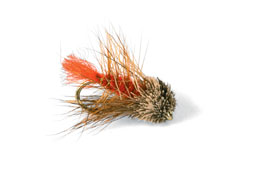 Muddler Again, this is cracking top dropper pattern because the deer-hair head is very buoyant and skates on or bulges under the surface. This is an out-and-out attracter pattern and can bring fish up from deep to investigate. |
Middle Dropper
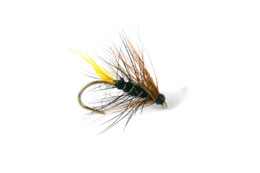 Kate Mclaren The head hackle contrasts really well with the body hackle and this acts as a trigger for any passing trout. This is a good fly when things are tough; the overall black coloration means it represents most of the beasties found in or on the water. It is best fished on the middle dropper and occasionally the top. |
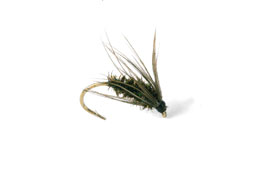 Black And Peacock Spider The peacock body imitates beetles perfectly, which are favourites of upland trout, so it’s no surprise it works. Try fishing from an upwind bank where naturals fall on the water. This pattern is best on the middle dropper. |
Point
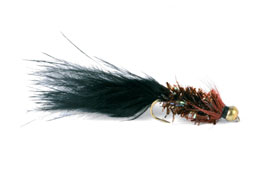 Black Lure Funnily enough, this pattern is one of those ‘rules out of the window flies’. Normally a great pattern for rainbow trout, it is very successful when it comes to winkling out early season brownies. This monstrosity should only be fished on the point. |
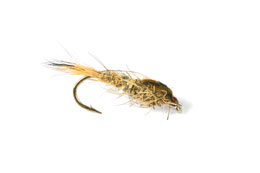 Weighted Gold Ribbed Hare’s Ear Nymph This popular nymph is suggestive of so many things that swims that it’s no wonder it’s a favourite. It’s a pattern that is equally effective whatever the time of year. It’s best fished on the point but an unweighted pattern can be fished on the top dropper. |


